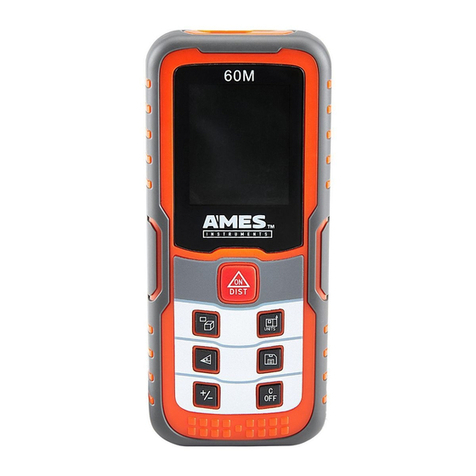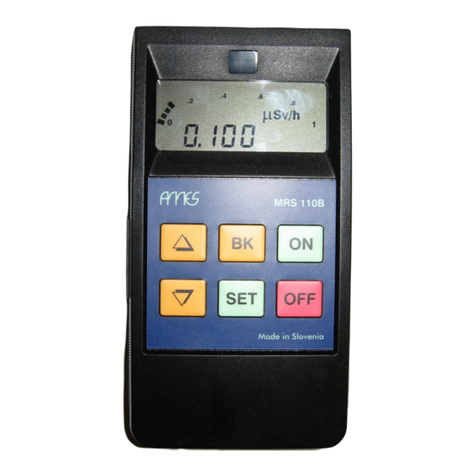2. INSTRUCTIONS FOR USE
At the location where wind is to be measured, RVM 160 is taken out of the case. Anemometer
is gripped by the handle and switched on with the ON / OFF switch (located on the handle).
When switch is pushed to the "I" position, the instrument is turned on (value 0.0 is displayed
on LCD). Second push to the “I” position turnes on the display illumination (which increases
power consumtion). Pushing switch to the “0” position turns the instrument off.
RVM 160 switches off automatically when cup assembly is not rotating for more than 4
minutes.
When measured wind speed exceeds 53 m/s, - - - is displayed on LCD.
After turning it on, RVM 160 must be raised and held in the upright position at such a height
that the display is at the eye level. Wind speed can be immediately read from the display.
Depending on the type of an instrument, it is displayed in meters per second, knots,
kilometres per hour, or miles per hour. If a conversion of units is necessary, the following
constants should be used:
1 knot equals 1.852 km/h equals 0.514 m/s or aprox. 0.5 m/s
1 m/s equals 3.6 km/h equals 1.942 knots or aprox. 2 knots
1 km/h equals 0.278 m/s equals 0.54 knots
1 mph equals 0.447 m/s equals 0.869 knots
During the measurements, care should be taken not to disturb the wind field by the operator
himself.
The handheld anemometer RVM 160 can be fixed onto a photographic tripod or similar
supporting device. For this purpose, a standard 1/4" nut is provided on the lid of the handle.
When using tripods or other supports care should be taken always to operate the instrument
in a vertical position.
If the wind speed display indicates 00.0 m/s even when the cup assembly is rotating, this
normally means that the batteries are exhausted and should be replaced. To replace the
batteries, unscrew the lid on the handle, pull out the battery compartment and replace the
batteries.
After the use, RVM 160 should be switched off by returning the ON /OFF switch into it’s
central position.
3. BATTERIES































